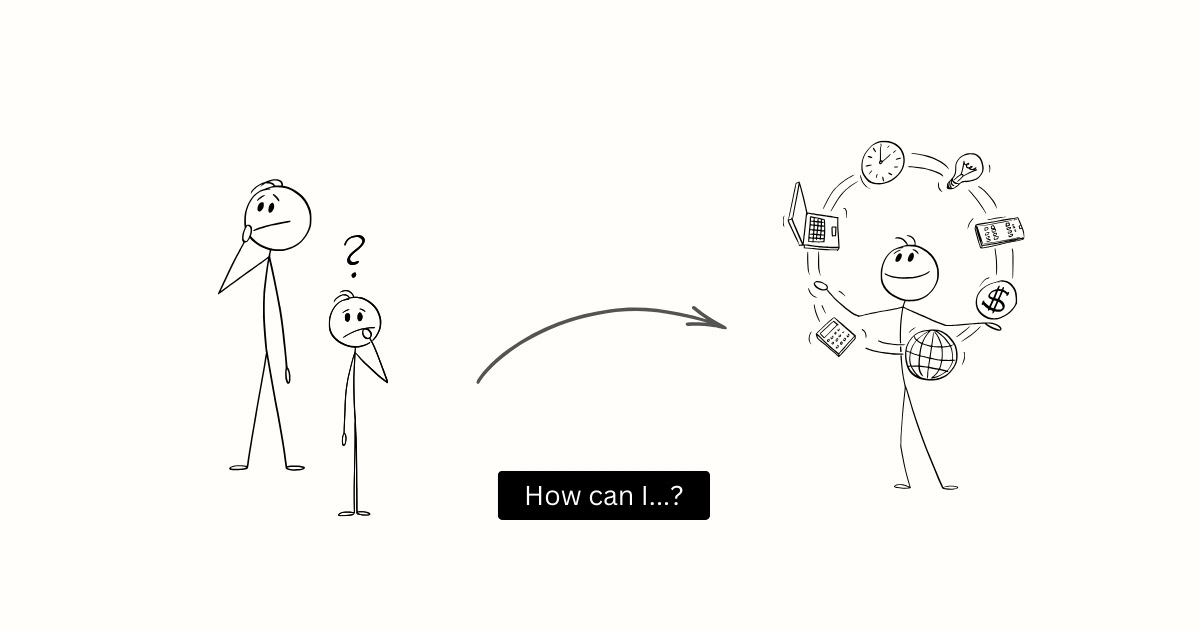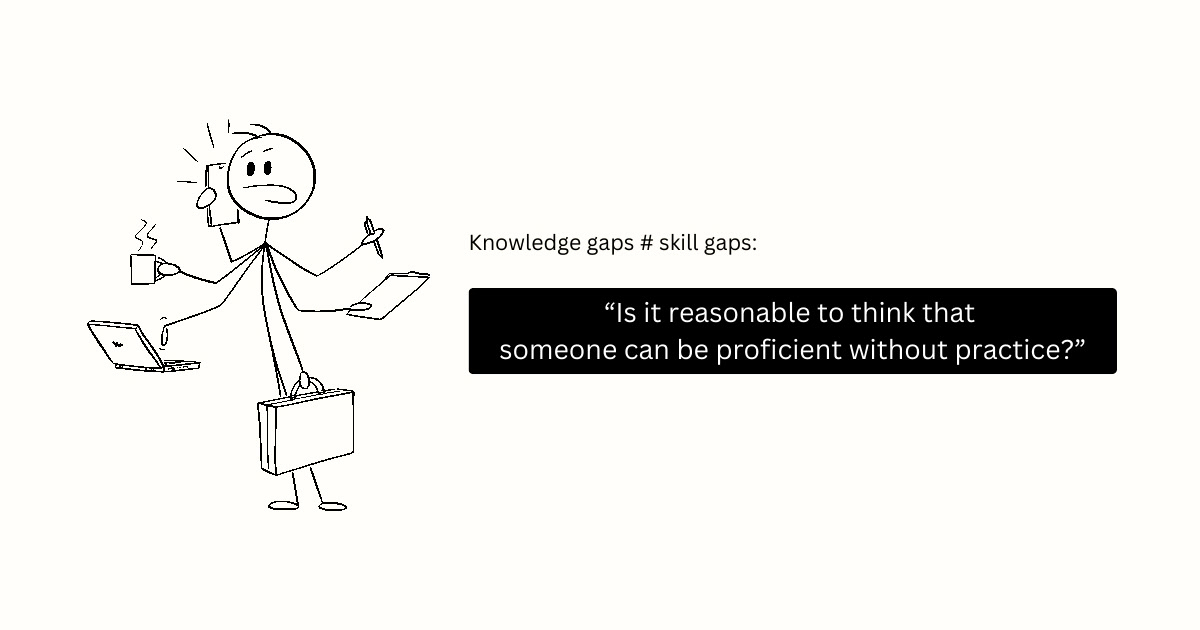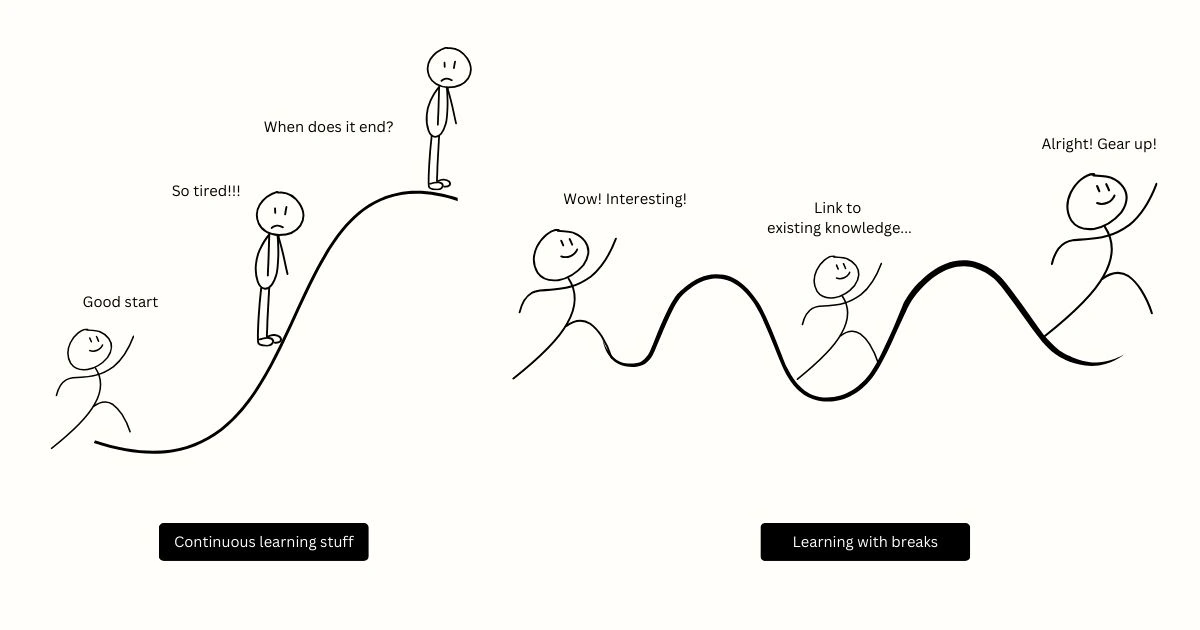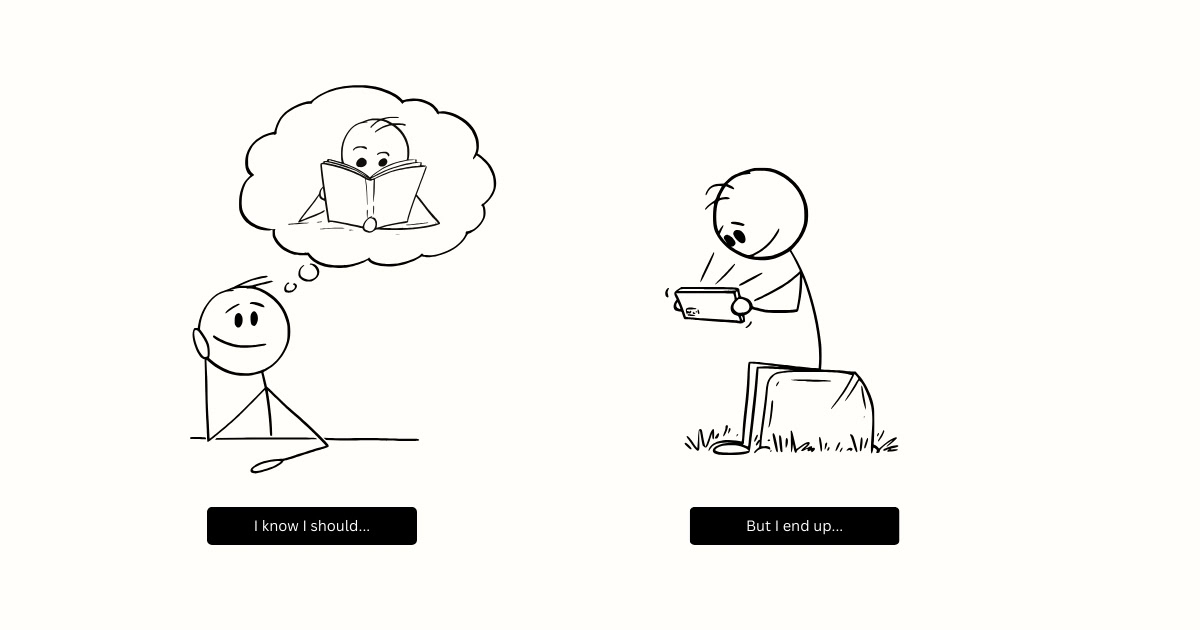Learning gaps grow from a fallacy: If learners have information, they will know how to perform.
For example, the percentage of learners getting used to a company’s new software stays low even though they have been instructed and gone through several demos.
The bounce rate for a training course falls sharply from the beginning and the completion rate is at a warning sign.
How come? What steps are missing?
According to Julie Dirksen, author of the bestselling learning design book “Design for How People Learn” points out, learners can not use or apply knowledge falls into 5 categories of learning gaps:
- Knowledge gaps: Learners have information about the topic but cannot perform it.
- Skills gaps: Learners have theory knowledge, but can’t do it in practice.
- Motivation gaps: Learners know what to do, but do not want or have enough motivation to do it.
- Environment gaps: Learners know what to do, own their skills, and have motivation but the surrounding environment does not support them.
- Communications gaps: Learners fail to perform (not due to reasons stated above) but receive bad directions.
In this blog post, we’ll learn why can’t your learners apply what they have learned. But, we’ll also discover a new and powerful eLearning authoring tool which can help you create engaging interactive games, simulations and instant feedbacks. ActivePresenter goes beyond static content delivery. It empowers you to craft dynamic learning activities that actively involve your learners, challenge them to apply their knowledge, and provide immediate insights into their understanding. By leveraging ActivePresenter’s intuitive interface and comprehensive feature set, you can transform passive learning into active mastery, ensuring your learners not only understand the “what” but also the “how” and the “why” behind what they learn.

1. Knowledge Gaps:
Knowledge gaps mean learners lack the necessary knowledge to perform something. In other words, they know what they want to achieve, but they do not know how to attain it.
Here are some of the examples you may come across:
A newbie instructional designer knows he needs to use graphic processing devices for better illustrations but they do not know how to master these tools.
A junior customer service employee is assigned to manage company CRM software, but she doesn’t know how to.
So, how to solve this case?
In fact, closing the knowledge-learning gaps as much as possible is the first thing that comes to most people’s minds.
That has nothing to say. Another question, by how?

Solutions for Knowledge Learning Gaps
If you are in a position of a learner, the richest solution is to learn from expertise in the field. You may enroll yourself in a course or class. Not only does it provide knowledge for you, but also brings you into a learning community with other peers.
If you are in the position of a teacher, trainer, or learning designer, you can consider using these tips:
- Let your learners act as the main role in the learning process by giving them stuff to do, asking them questions, and getting them involved in the lesson.
- Create “friction” that causes “brain twist” to your learners, since easy things will go in one ear and out the other.
- Design problem-based learning scenarios to bootstrap learning progress.
2. Skill Learning Gaps
The second phase of learning gaps is skill gaps, occurring when learners have the knowledge but do not know how to apply it in practical situations.
For example, we have all the hiking gear: car, compass, etc., but can we confidently join in the tracking tour? Perhaps little chance.
Students having four years studying in a university with straight A scores still encounter difficulty in fully adapting to their working jobs.
That’s where skills gaps land.
Practice is one of the vital elements to distinguish whether skill learning gaps are absent. Without practice, the knowledge is nothing but to be introduced, get no help in enriching learners.
💡Knowledge gaps vs Skill gaps
As you read this far, you may ask what is the exact difference between knowledge and skills, is it similar or overlapping to some extent?
The answer is already half-revealed above. The keyword is practice.
In Design for How People Learn book, she points out a clear and concise answer to distinguish the difference that we can’t agree more:
“Is it reasonable to think that someone can be proficient without practice?”
If yes, it’s the knowledge gap. If not, it’s a skill gap.

Examples for better visualization:
Sharing docs with collaborators is a knowledge gap, not a skill gap.
Proficient at speaking a foreign language is a skill gap, not a knowledge gap.
Solutions for Skill Gaps
Two components to minimize skill gaps quickly are reasonable practice and frequent feedback.
The most optimal way is to alternate new stuff with stuff learners have already known, and offer appropriate breaks in absorbing information. Whereas, forcing learners to learn new stuff continuously would harm their motivation and counteract learning outcomes. Therefore, combining practicing, and giving learners time to review and revise before rolling to the next is highly recommended.

Learners expect to receive notifications or feedback after taking an action for example, whether they answer a question correctly or not. By receiving repetitive learning feedback, they are unconsciously engaged with the lessons. If we fail to give learners the right time feedback (multiple times), there is a likelihood they will quit your course (quietly).
3. Motivation Gaps
Motivation learning gaps occur when learners know what to do, but choose not to do it.
The reason for the attendance of motivation gaps may vary, here are a few:
- Unattractive outcomes or outputs
- Intervention or focus loss
- Lack of vision for the bigger picture, etc.
In detail, here are 2 types of motivation:
Motivation to do: Learners know about it, but do on act on it
For example:
“I know driving on the left is violating road traffic law, but it would save time, and I will drive carefully”
Motivation to learn: Learners know they have to act on it, but they keep delaying.
“I know learning English would help me get a promotion, but I can’t help scrolling my phone every day after work”

And yes, change is not always an easy story. Change for ourselves is hard, change for others is much harder.
Solution for Motivation Learning Gaps
Before coming directly to solutions, we would like to offer a new term, called Elephant and The Rider.
The rider represents the rational and conscious part of the brain.
In contrast, Elephant is described as the “automatic system” of human brains hunting for low-hanging fruits (Source: Jonathan Haidt in The Happiness Hypothesis book).
We can force ourselves to pay attention, which means the Rider can force the Elephant to sacrifice temporary convenience, but this takes up a lot of willpower and it does not last long, to be honest.
Therefore, the ultimate learning design for motivation gaps is to reduce the conflict between the rider and the elephant as much as possible, by attracting your Elephant.
- Bring in storytelling: Stories slide better in people’s minds than any other methods since they have rational flow and climax.
- Create surprise and unexpected rewards: e.g bonus points for a successful streak in game-based lesson design
- Boost up visual look: “A picture is worth a thousand words”
- Engage with other learners: collaborate, compete, and social proof (it’s worthwhile if other learners are doing it).
4. Environment Learning Gaps:
The environment gaps land in when learners own their knowledge, skills, and motivation, but the environment or situation does not support their performance.
For example,
Learners are ready to start learning, but they have to join a 20-minute walkthrough without skipping.
Learners are willing to give feedback, but feedback is designed in four A4 pages long.
Learners want to get used to software, they have to find, then open a manual PDF, search for keywords, and read it. It takes about half an hour to complete. In contrast, they can turn to the person sitting next to them, and it takes 2 minutes to finish this task.
Solution to Environment Gaps
The key point is to create a smooth learning experience without interruption. Reducing the burden of performing a task like offering clear instructions, providing in-time support, etc., would help to minimize environment learning gaps.
Here are several methods to deal with these gaps:
- Design and operate the knowledge close to learners’ behavior as much as possible
- Observe how learners process their learning, and brainstorm if there is any step at any stage that needs to be simplified, changed, or removed.
5. Communication Gaps
Communication gap is the type of learning gap in which learners do not receive clear guidelines, or instructions in their learning process leading to bad performance.
Reasons could be:
- The instructor doesn’t know (exactly) where they lead learners (lack of final goals)
- The instructor knows but provides inadequate or vague information
- The instructor has one way of communicating with their learners
Solution for Communication Gaps
As come to mind the first solution is to foster two-way communication between the instructor and learners. That sounds obvious. Then, by how? Here are some suggestions:
- Communicate with your learners about learning goals and ensure they acknowledge them (by checking their understanding in return).
- Give brief, concise, consistent guidelines.
- Operate regular knowledge and orientation check-up with learners, to avoid communication gaps expansion.
Final Words
Being aware of these learning gaps would support teachers and trainers in categorizing the right learning issues to deliver the right solutions to the learners. From that, we can minimize these gaps to leapfrog learners’ learning results.
Table of Contents